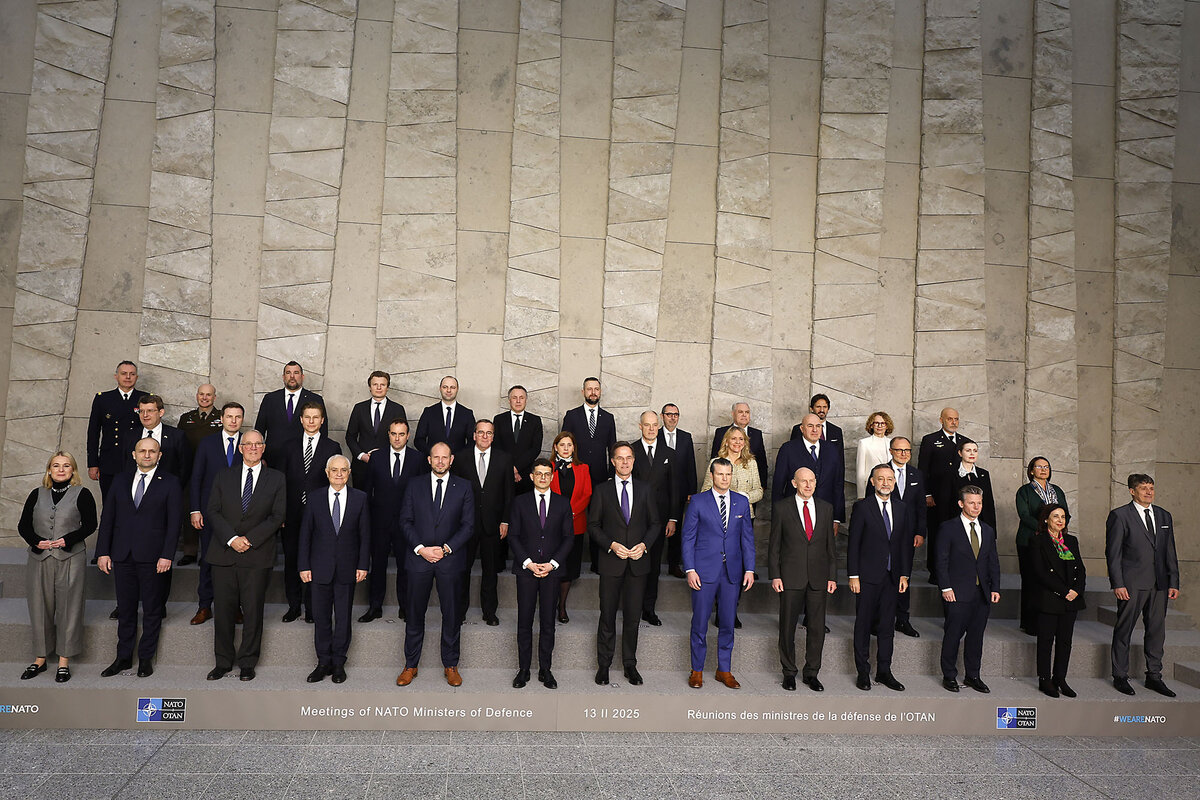As its trust in US ebbs, Europe takes hard look at more defense spending
Loading...
| Madrid
A consensus is solidifying on both sides of the Atlantic: Europe must stand on its own two feet. For too long, the thinking goes, Europe has relied on the United States to shoulder the costs of its own defense.
Washington will “no longer tolerate an imbalanced relationship” with its NATO allies, U.S. Defense Secretary Pete Hegseth said Feb. 12 at an international defense meeting in Brussels.
The warning has left European leaders, fearing the possibility of Russian aggression beyond Ukraine, scrambling to fill the gap.
Why We Wrote This
As the United States becomes an increasingly unreliable ally, the pressure is mounting on Europe to pay for its own defense. But the transition will be expensive, complicated, and slow.
What will it cost Europe to defend itself?
The promise of security funded by Washington has long let European governments focus their budgets on their citizens. That “peace dividend” has boded well for welfare but poorly for militaries.
European forces have hollowed out since the end of the Cold War; defense spending dropped from 2.4% of gross domestic product in 1989 to around 1.3% in 2015.
Funding began to pick up after Russia’s annexation of Crimea in 2014 and has surged since its invasion of Ukraine in 2022. Countries closest to Russia, such as Poland, have done the most to beef up their spending. But just 23 of 32 member states meet the NATO target of spending 2% of GDP on defense. (U.S. President Donald Trump has insisted on 5%.)
United Kingdom Defense Secretary John Healey said last fall the British armed forces are not prepared to fight a war. German Defense Minister Boris Pistorius is pushing for funding to prepare his forces for war by 2029.
It is difficult to judge the exact price Europe will have to pay for its security. The European Commission estimates a funding gap of €500 billion ($524 billion) over the coming decade.
A recent think-tank report puts the number much higher at €250 billion a year, estimating it will take an extra 300,000 troops, 1,400 tanks, 2,000 infantry fighting vehicles, and 700 artillery pieces for Europe to credibly deter Russian aggression. Denmark recently announced it will boost spending on defense by $7 billion, up to 3% of GDP.
Some are concerned the commitments are not yet enough, with Russia’s military capacity having multiplied since 2022. Norway’s chief of defense, Eirik Kristoffersen, has argued that NATO has two to three years to prepare before Russia has rebuilt the capacity for an attack.
“We will have to face difficult days, make complicated decisions and even sacrifices which we weren’t expecting until now to ensure this security,” said French Foreign Minister Jean-Noel Barrot at the Munich Security Conference.
How will Europe afford it?
While voters are often thought to prefer butter to guns, the threat from Russia may be softening reluctance to spend money to augment military capacity.
Yet Europe is feeling the pressure of strapped budgets and slowing, aging economies. Countries such as Spain and Italy are already pushed up against debt limits set by the European Union. Commission chief Ursula von der Leyen has proposed easing these rules to allow member nations to take on more debt for national defense.
The EU cannot use money from its own budget to buy weapons, nor can the European Bank for Reconstruction and Development fund military production. One idea is to open a “rearmament bank,” which could include non-EU nations such as the U.K. and Norway, to raise joint funds quickly. Another is for the EU to issue joint-defense bonds.
European defense stocks have surged as the pressure to rearm has grown. The threat of war means policymakers are pushing for more private investment, reframing defense as a necessary investment in peace and stability.
Beyond finances, many European armies lack enough troops. Some are attempting to improve pay and working conditions, including measures to make women feel more welcome. Others are bringing back or expanding mandatory military conscription.
What does this mean for Europe going forward?
The Trump administration’s warnings to European leaders do not amount to a full-blown retreat from the continent or NATO. How far the U.S. will scale back its support to Europe remains an open question. Nevertheless, Europe is preparing for the worst.
“Given President Trump’s mercurial nature ... how much confidence can Europe have in any degree of American protection and defense?” asks Nigel Gould-Davies, senior fellow for Russia and Eurasia at the International Institute for Strategic Studies.
Reducing European dependence on American military capacity will take time. But as costly as it may be, more Europeans are saying that deterrence is less expensive than war.
“Europe’s mindset has to change,” Sauli Niinistö, Finland’s former president, told the Financial Times. “You cannot avoid war by being weak.”









